by Jon LeSage, editor and publisher, Green Auto Market
Here’s my take on the 10 most significant and interesting occurrences during the past week…….
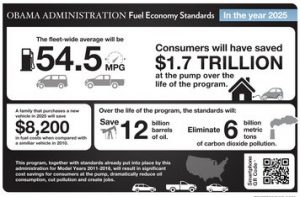 Midterm mpg report: Hitting the 54.5 mpg target by the 2025 model year is not looking good, according to a long-awaited government report. Automakers are doing an excellent job of rolling out clean technologies, but buyer preferences have been leaning toward SUVs and trucks as gas prices stay down. The U.S. Environmental Protection Agency, National Highway Traffic Safety Administration, and California Air Resources Board released their draft Technical Assessment Report analyzing costs, technology, and other issues involved in the industry’s drive toward lowering greenhouse gas emissions. Administration officials told reporters on a conference call Monday that the 54.5 mpg goal was never a mandate but more of an estimate of where the industry could be by the 2025 model year. The report also says that automakers will be able to meet standards with improvements in standard gasoline engines, and won’t need to rely heavily on sales of hybrids or electric cars. In related news, automakers will be finding out that next month, NHTSA will more than double the fine it assesses automakers that fall short of their annual corporate average fuel economy standards. Penalties paid by automakers over the 2010-14 model years for missing fuel economy targets will be: $46.2 million by Jaguar Land Rover; $28.2 million by Daimler; $17.4 million by Volvo Cars; $4.8 million by Porsche; and $3.6 million by Fiat. On the other end of the scale, Mazda became the first non-electric automaker to hit 100% compliance with the 2016 CAFE standards, which called for a fleet average of 34.1 mpg. Before that, Tesla was the only automaker to meet the regulations, but its fleet is all-electric. Mazda’s entire lineup in the U.S. is powered by gasoline engines and includes no hybrids. Mazda says that its Skyactiv engine technologies has improved its fleet fuel economy.
Midterm mpg report: Hitting the 54.5 mpg target by the 2025 model year is not looking good, according to a long-awaited government report. Automakers are doing an excellent job of rolling out clean technologies, but buyer preferences have been leaning toward SUVs and trucks as gas prices stay down. The U.S. Environmental Protection Agency, National Highway Traffic Safety Administration, and California Air Resources Board released their draft Technical Assessment Report analyzing costs, technology, and other issues involved in the industry’s drive toward lowering greenhouse gas emissions. Administration officials told reporters on a conference call Monday that the 54.5 mpg goal was never a mandate but more of an estimate of where the industry could be by the 2025 model year. The report also says that automakers will be able to meet standards with improvements in standard gasoline engines, and won’t need to rely heavily on sales of hybrids or electric cars. In related news, automakers will be finding out that next month, NHTSA will more than double the fine it assesses automakers that fall short of their annual corporate average fuel economy standards. Penalties paid by automakers over the 2010-14 model years for missing fuel economy targets will be: $46.2 million by Jaguar Land Rover; $28.2 million by Daimler; $17.4 million by Volvo Cars; $4.8 million by Porsche; and $3.6 million by Fiat. On the other end of the scale, Mazda became the first non-electric automaker to hit 100% compliance with the 2016 CAFE standards, which called for a fleet average of 34.1 mpg. Before that, Tesla was the only automaker to meet the regulations, but its fleet is all-electric. Mazda’s entire lineup in the U.S. is powered by gasoline engines and includes no hybrids. Mazda says that its Skyactiv engine technologies has improved its fleet fuel economy.- Refining Autopilot technology: Tesla Motors is working with suppliers Bosch and Mobileye to refine its Autopilot technology since the fatal crash in Florida. Tesla CEO Elon Musk, in a series of Tweets on Sunday, promised “moderate and maybe big advances” in Autopilot. The improvements would augment features such as the vehicles’ front-facing camera and radar, as well as 360-degree sensors. Musk said Tesla had a “promising call” with supplier Bosch, which provides the forward-looking radar on the Models S and X, and that “significant improvements” to the system likely will be forthcoming. As for the Tesla “Masterplan,” Musk is expected to outline future product and business plans that would go beyond the Model 3 the company is planning to launch during the second half of 2017. Consumer Reports urged Tesla to disable the automatic steering function in its Autopilot system. The magazine wants Tesla to disable the current system, require drivers to keep their hands on the wheel as part of an updated driver assist system, and stop referring to the product as Autopilot.
- States filing suit against VW: Maryland Attorney General Brian Frosh said in a statement that his state and others plan to sue Volkswagen over the environmental damage done by the carmaker’s so-called defeat devices. Frosh said Maryland is acting in coordination with the attorneys general of New York and Massachusetts, among others, and that a press conference will be held today. In related news, the California Air Resources Board said on Wednesday that the plan to fix the 2009-2016 model year VW and Audi vehicles equipped with devices designed to cheat emissions tests was insufficient. The state has rejected VW’s proposed recall plan to fix 16,000 3.0-liter diesel Volkswagens, Audis, and Porsches.
- Big Oil losing power: The oil industry is headed for change that will gradually reduce its power in the transportation fuel market, according to a Lux Research report. Alternative fuels and battery technologies are bringing serious threats to oil company profits, along with the impact of the Paris climate change agreement made at the end of 2015.
- Accord Hybrid just the beginning: Honda says that the refreshed 2017 Accord Hybrid is just the beginning of a comprehensive lineup of green cars. Subtle changes to the Accord Hybrid’s 2.0L gasoline engine and the smaller, lighter hybrid system put the Accord Hybrid at the top of the midsize hybrid sedan segment for fuel economy, at 50 mpg city and 47 mpg highway, based on 2016 rating criteria. “It’s the first step in our plan to create a true volume sales pillar for electrified vehicles of all kinds: hybrids, plug-ins, battery electrics and fuel cells,” says Jeff Conrad, general manager of the Honda brand.
- Concerns over watering down LCFS: John Boesel, president and chief executive of Calstart, has written a guest column coming from a joint letter submitted recently to state legislative leaders. Nearly 60 producers and providers of clean fuels, ranging from electricity to renewable diesel, have signed a joint letter urging state policymakers to sustain the state’s Low Carbon Fuel Standard. The successful LCFS policy may be in danger, Boesel says, and the coalition would like to see California continue supporting the low carbon fuel policy. California Gov. Jerry Brown is negotiating with the oil industry to preserve the state’s greenhouse gas cap-and-trade program. The governor wants to put together a legislative coalition that will provide a two-thirds majority vote to extend California’s climate program to 2030 and beyond. “Part of that involves freeing the cap-and-trade program from potential legal challenges. The governor may be willing to compromise on the LCFS to get the oil industry’s support,” Boesel wrote.
- Ford Fusion Energi: Ford has added another plug-in hybrid to its product line. The Fusion Energi joins Ford’s C-Max and Focus family of hybrid and plug-in hybrid vehicles. Ford thinks it will take the leading edge of a fleet of 13 new electrics the company says it will put on the road by 2020. The automaker says the Energi can travel 21 miles on battery electric power before the gasoline engine kicks in.
- LA port sustainable advisory board: Los Angeles Mayor Eric Garcetti last week announced the appointment of an advisory panel tasked with reducing air pollution from the Port of Los Angeles by expanding the use of zero-emissions technology. The 10-member Sustainable Freight Advisory Board is made up of representatives from industry, environmental groups, labor, and air quality agencies. The new board will advise the port on how to work with manufacturers to develop and deploy cleaner trucks, trains, ships, and cargo-handling equipment. Both the Los Angeles and Long Beach ports are working on reducing emissions from the single largest source of air pollution in Southern California.
- Uber passes 2B mark: Uber passed the two billion ride mark on June 18, CEO Travis Kalanick said in a Facebook post, six months after marking its first billion rides. That surge in rides was due in part to its heavy spending to recruit drivers and passengers, which is made possible by more than $13 billion in funding from investors. Uber is offering rides in 450 cities globally, up from 311 a year ago.
- Protean finds more funding: Protean Electric just announced an additional $70 million in funding to support development of its in-wheel electric drive systems. New funding has comes from GO Scale Capital, Zhejiang VIE Science & Technology Co. Ltd., and Tianjin THSG Corporation. Existing investors Oak Investment Partners and GSR Ventures co-invested in Protean’s equity financing round. The new funding will be used to ramp up production in China of Protean’s PD18 product line, and for new product development and formation of a manufacturing joint venture with VIE.

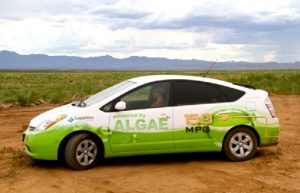 A few years ago, algae biofuels and oils looked like ideal options for the future of clean transportation. For those objecting to corn-based ethanol, or concerned about traditional biodiesel, algae fuel was showing a lot promise for passenger cars and commercial vehicles. Appealing factors have included emission reductions and the ability to tap into the renewable fuels and oils through plants.
A few years ago, algae biofuels and oils looked like ideal options for the future of clean transportation. For those objecting to corn-based ethanol, or concerned about traditional biodiesel, algae fuel was showing a lot promise for passenger cars and commercial vehicles. Appealing factors have included emission reductions and the ability to tap into the renewable fuels and oils through plants.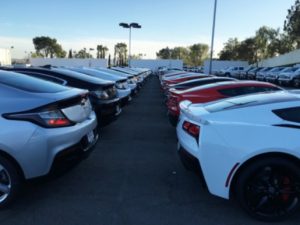 Top sales month ever: June saw the
Top sales month ever: June saw the 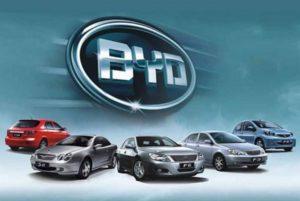 There continues to be a symbiotic relationship between the U.S. and China in plug-in electric vehicle manufacturing, sales, and technology development. Government subsidies are helping bring sales up, as are introductions of new models that are gaining more interest from consumers in both China and the U.S. More EVs are coming in the near future, and in more type classes, including a minivan and crossover SUVs in the U.S. market and diverse offerings in China. The Beijing Motor Show in April and May showed off an intriguing lineup of new EVs rolling out from BYD, Changjiang, Dongfeng, Brilliance, Beijing Auto, Changfeng, JAC, and others. The symbiotic relationship comes from alliances between global automakers and Chinese companies for EVs to be sold in China and eventually in other markets; and between the Chinese and American governments pushing for clean technologies and emissions reductions. There’s also a list of manufacturers and suppliers based in the U.S. that are building electric cars and technologies that will be shipped overseas and sold in China.
There continues to be a symbiotic relationship between the U.S. and China in plug-in electric vehicle manufacturing, sales, and technology development. Government subsidies are helping bring sales up, as are introductions of new models that are gaining more interest from consumers in both China and the U.S. More EVs are coming in the near future, and in more type classes, including a minivan and crossover SUVs in the U.S. market and diverse offerings in China. The Beijing Motor Show in April and May showed off an intriguing lineup of new EVs rolling out from BYD, Changjiang, Dongfeng, Brilliance, Beijing Auto, Changfeng, JAC, and others. The symbiotic relationship comes from alliances between global automakers and Chinese companies for EVs to be sold in China and eventually in other markets; and between the Chinese and American governments pushing for clean technologies and emissions reductions. There’s also a list of manufacturers and suppliers based in the U.S. that are building electric cars and technologies that will be shipped overseas and sold in China.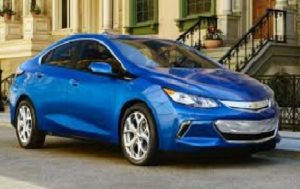 Increasing EV sales: How will U.S. new vehicle sales go from less than 1% to more than 10% plug-in electric vehicle sales? Automaker speaker panelists at EVS29 in Montreal
Increasing EV sales: How will U.S. new vehicle sales go from less than 1% to more than 10% plug-in electric vehicle sales? Automaker speaker panelists at EVS29 in Montreal 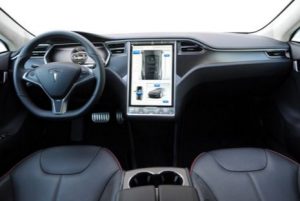 The fatality of a driver in a Tesla Model S with Autopilot is being described as the very first casualty from an autonomous vehicle technology. Here are details from the incident and where this may lead in the near future..……..
The fatality of a driver in a Tesla Model S with Autopilot is being described as the very first casualty from an autonomous vehicle technology. Here are details from the incident and where this may lead in the near future..…….. ZEV credits tightening:
ZEV credits tightening: 
 The largest electric vehicle conference of the year returned to North America. Electric Vehicle Symposium & Exhibition (EVS29) was held June 19-22 in Montreal with about 2,000 attendees participating in speaker sessions and workshops – and an opportunity to test drive EVs. The international event showcased EVs and charging infrastructure from Québec and all over the world. Sponsors included Nissan, Toyota, the provinces of Quebec and Ontario, Hydro Quebec, Investissement Québec, and Charged Electric Vehicle Magazine; the event was organized and hosted by Electric Drive Transportation Association. (Editor’s note: EVS30 will be the 30th EVS venue since 1969 and it will be held next year in Stuttgart, Germany.)
The largest electric vehicle conference of the year returned to North America. Electric Vehicle Symposium & Exhibition (EVS29) was held June 19-22 in Montreal with about 2,000 attendees participating in speaker sessions and workshops – and an opportunity to test drive EVs. The international event showcased EVs and charging infrastructure from Québec and all over the world. Sponsors included Nissan, Toyota, the provinces of Quebec and Ontario, Hydro Quebec, Investissement Québec, and Charged Electric Vehicle Magazine; the event was organized and hosted by Electric Drive Transportation Association. (Editor’s note: EVS30 will be the 30th EVS venue since 1969 and it will be held next year in Stuttgart, Germany.)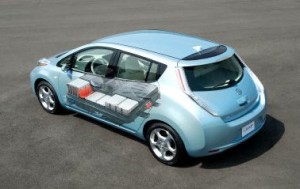 Nissan Leaf will go over 200: The
Nissan Leaf will go over 200: The 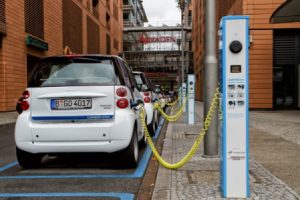 Volkswagen Group just made a commitment to change its business strategy in the wake of the diesel emissions scandal that started last September. The German automaker will be introducing more than “30 new pure electric vehicles” by 2025, while also establishing a mobility solutions division. Two other German automakers are heading down a similar path. Daimler will be introducing a long-range electric vehicle this fall at the Paris auto show, but it’s just the tip of the iceberg for its electrification strategy, according to Mercedes-Benz USA’s chief executive. BMW will be adding to the i Series with the “i Next” as the automaker combines autonomous mobility with electrification in the BMW and Mini brands.
Volkswagen Group just made a commitment to change its business strategy in the wake of the diesel emissions scandal that started last September. The German automaker will be introducing more than “30 new pure electric vehicles” by 2025, while also establishing a mobility solutions division. Two other German automakers are heading down a similar path. Daimler will be introducing a long-range electric vehicle this fall at the Paris auto show, but it’s just the tip of the iceberg for its electrification strategy, according to Mercedes-Benz USA’s chief executive. BMW will be adding to the i Series with the “i Next” as the automaker combines autonomous mobility with electrification in the BMW and Mini brands.